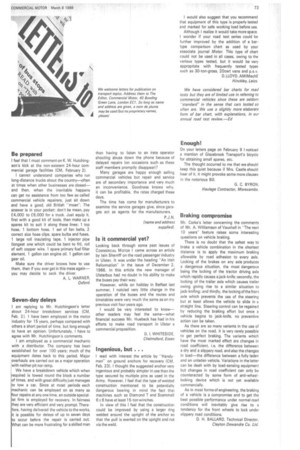Ingenious, but. . .
Page 75

If you've noticed an error in this article please click here to report it so we can fix it.
I read with interest the article by "Handyman" on ground anchors for recovery (CM, Feb. 23). I thought the suggested anchor very ingenious and probably simpler in use than the type secured by multiple pins as used in the Army. However, I feel that the type of welded construction mentioned to be potentially dangerous bearing in mind the fact that machines such as Diamond T and Scammell 6 x 6 have at least 15-ton winches.
In view of this I feel that the construction could be improved by using a larger ring welded around the upright of the anchor so that the pull is exerted on the upright and not via the weld. I would also suggest that you recommend that equipment of this type is properly tested and marked for safe working load before use.
Although I realize it would take more space. I wonder if your road test series could be further improved by the addition of a bartype comparison chart as used by your associate journal Motor. This type of chart could not be used in all cases, owing to the various types tested, but it would be very appropriate with frequently tested types such as 30-ton-gross, 20cwt vans and p.s.v.
D. LLOYD, AM IMechE Hinckley, Leics.
We have considered bar charts for road tests but they are of limited use in referring to commercial vehicles since these are seldom "standard" in the sense that cars tested so often are. We use a slightly more elaborate form of bar chart, with explanations, in our annual road test review.—Ed




































































































































